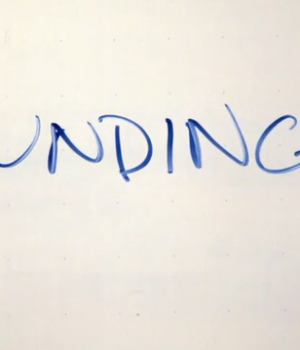Financial technology, also known as FinTech, is a rapidly growing line of business that is revolutionising the financial services sector and disrupting existing financial service providers.
Similar to Uber for ride sharing and Airbnb for room sharing, FinTech brings together finance and technology to introduce new ways to deliver financial services.
One of the most prominent is peer-to-peer lending. Under this model, lenders (or investors) are connected with borrowers through an online platform, removing the need for a traditional financial institution.
Peer-to-peer lending has already grown significantly in the United Kingdom and the United States, but remains in its early stages in Australia.
It has the potential to disrupt the consumer and business lending sector and take market share from banks and other financial institutions.
How does peer-to-peer lending work?
Peer-to-peer lenders typically follow a different business model to that of banks and other financial institutions. These traditional financial institutions lend directly from their own balance sheets, taking deposits from clients and issuing loans. They earn income on the spread between the interest paid to depositors and interest received from outstanding loans.
In contrast, peer-to-peer lenders generally earn a fee that can be flat, one-off or based on the size of the loan. This can be beneficial for both the investor and borrower, as it tends to provide a higher return for those lending their surplus funds and a lower interest rate or cost of borrowing for those taking out the loan.
Peer-to-peer lending has picked up in the US
In the United States, peer-to-peer lending has expanded rapidly over the past five years, with the industry expected to grow by an annualised 156.8%, to reach US$1.2 billion in 2015.
Both consumers and small businesses have welcomed the introduction of peer-to-peer lending in the United States. Borrowers that do not qualify for a bank loan under their stringent lending standards are often able to obtain a smaller loan from peer-to-peer lenders.
However, uncertainty still surrounds the industry, as the regulatory environment continues to evolve. At this time, peer-to-peer lenders are required to register as securities with the Securities and Exchange Commission, but further regulation and oversight may be imposed if they continue to grow in significance to consumer lending.
How is peer-to-peer lending doing in Australia?
In Australia, peer-to-peer lending is still in its infancy, with loans issued in 2014 estimated at US$500.0 million by Morgan Stanley. This is compared with the United Kingdom and the United States, where loan issuance totalled an estimated US$2.3 billion and US$12.0 billion, respectively.
However, peer-to-peer lending has already captured the attention of some major investors, including James Packer, Rupert Murdoch, Kerry Stokes and Westpac, all of which are shareholders in SocietyOne, a leading peer-to-peer lender in Australia.
Currently, the majority of investment offers for Australian peer-to-peer lenders are only available to sophisticated investors (individuals with net assets of at least $2.5 million or a minimum annual gross income of $250,000 for the previous two years), or wholesale investors (investments of $500,000 or more).
However, many peer-to-peer lenders are pushing to open their offering to retail investors. There have been several local start-ups and established foreign peer-to-peer lenders attempting to capitalise on this largely untapped market.
Nevertheless, it remains to be seen whether the overseas success of peer-to-peer lending can be replicated in Australia.
via IBISWorld






![Networking is for suckers… master Inbound Marketing [FREE REPORT]](https://anthillonline.com/wp-content/uploads/2015/03/inboundreloaded-253x194.png)
![Five essential ingredients for a humming homepage with James Tuckerman [FREE REPORT]](https://anthillonline.com/wp-content/uploads/2015/07/homepage-checklist-1680-01-copy-100x75.png)
![Learn how to use Instagram as a business tool [FREE INFOGRAPHIC]](https://anthillonline.com/wp-content/uploads/2012/12/nickelbackinstagram-100x75.jpg)
![The Facebook Honey Trap with James Tuckerman [CHEAT SHEET]](https://anthillonline.com/wp-content/uploads/2015/11/Screen-Shot-2015-11-26-at-11.34.14-100x75.png)
![Seven steps to crafting the perfect email, with James Tuckerman [FREE REPORT]](https://anthillonline.com/wp-content/uploads/2015/08/7-steps-cheatsheet-3d-cover-nuova--100x75.png)
![How to price your product or service in 8 steps with Steve Major [FREE INFOGRAPHIC]](https://anthillonline.com/wp-content/uploads/2015/07/Screen-Shot-2015-11-26-at-11.40.10-100x75.png)

![What the hell is integrated advertising? And, do I need to do it? [VIDEO]](https://anthillonline.com/wp-content/uploads/2012/09/integratedadvertising.jpg)


![Four principles to creating dedicated customers…or zombie loyalists with Peter Shankman [Free report]](https://anthillonline.com/wp-content/uploads/2015/11/Screen-Shot-2015-11-26-at-11.16.26-300x194.png)

![How to pitch sales and marketing ideas to your boss with James Tuckerman [FREE REPORT]](https://anthillonline.com/wp-content/uploads/2015/07/Render-3-100x75.png)
![THE ULTIMATE CASHFLOW CHECKLIST [FREE DOWNLOAD]](https://anthillonline.com/wp-content/uploads/2016/06/james-Seven-simple-strategies-to-cut-costs-04.pdf-Box-2016-06-30-13-49-35-100x75.png)
![Strategic Alliances with Simone Novello [FREE INFOGRAPHIC]](https://anthillonline.com/wp-content/uploads/2015/08/Capture6-100x75.jpg)
![New Zealand’s Xero eyes US IPO, further disruption as subscribers increase [INFOGRAPHIC]](https://anthillonline.com/wp-content/uploads/2014/07/sruuuuujana-212x194.png)
![Ever wonder if your ‘content marketing’ is really just crap? You gotta see this! [INFOGRAPHIC]](https://anthillonline.com/wp-content/uploads/2014/08/content-100x75.jpg)
![7 Business Lessons From Game of Thrones [INFOGRAPHIC]](https://anthillonline.com/wp-content/uploads/2014/10/infographic-games-of-thrones-041-100x75.jpg)
![How to build your own Media Empire… In seven steps with Nathan Chan [INFOGRAPHIC]](https://anthillonline.com/wp-content/uploads/2014/10/Nathan-Chan-Infographic-e1413419529176-100x75.jpg)
![5 Business Lessons From Tinder [INFOGRAPHIC]](https://anthillonline.com/wp-content/uploads/2014/10/Tinder-Elegant-Infographic-100x75.jpg)



